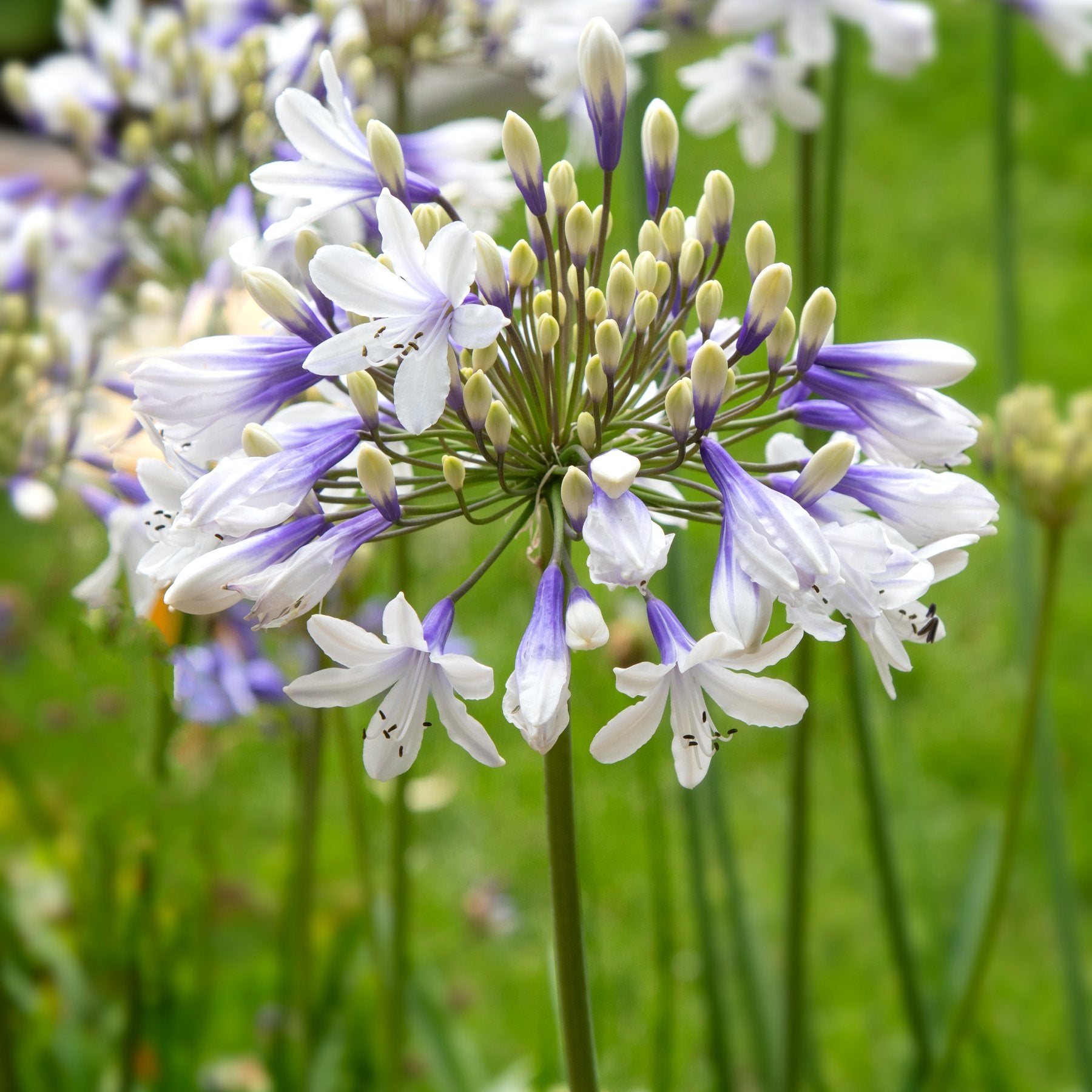Agapanthus Varieties: Picking the Best for Your Landscape
Mastering the Art of Agapanthus Treatment: Necessary Steps for Healthy And Balanced Growth and Dynamic Blossoms
In the world of gardening, the growing of agapanthus stands as a rewarding endeavor for those that look for to support these elegant flowering plants. With their striking blooms and graceful foliage, agapanthus has actually captured the attention of gardeners worldwide. However, achieving ideal development and vibrant blossoms calls for a nuanced strategy that includes different important steps. From picking the right variety to grasping pruning techniques, the trip towards growing prospering agapanthus plants is diverse and holds the vital to unlocking the full possibility of these agricultural gems.

Picking the Right Agapanthus Variety

When choosing the best Agapanthus range for your garden, think about elements such as climate viability, flower color, and development behavior. In addition, think about the climate in your area to make certain the Agapanthus range you pick can flourish in your certain conditions. Understanding the development routine of different Agapanthus ranges is essential for proper placement within your garden.
Ideal Planting Problems
Thinking about the optimum environmental demands is essential for effective Agapanthus cultivation. Agapanthus grows in well-draining dirt with a somewhat acidic to neutral pH level. When growing, pick a place that gets complete sunshine to partial shade. In hotter climates, supplying some afternoon shade can stop scorching of the leaves. Agapanthus plants are sensitive to cool temperatures and should be safeguarded from frost during cold weather.
To make certain healthy growth and vibrant blossoms, plant Agapanthus bulbs at a deepness of regarding 2-4 inches and area them 8-12 inches apart. Mulching around the base of the plants helps maintain moisture and reduces weed development.
Watering and Fertilizing Tips
Keeping proper dampness levels and offering essential nutrients are key elements in the care regimen for Agapanthus plants. When it comes to watering Agapanthus, it is crucial to strike a balance. These plants prefer regularly wet soil but are prone to root rot if overwatered.
Fertilizing Agapanthus is necessary for promoting healthy and balanced development and respected blooms. Apply a well balanced fertilizer, such as a 10-10-10 formula, in the very early springtime as brand-new growth emerges. Repeat this application every 6-8 weeks throughout the growing period. Avoid excessive fertilizing, as it can cause rich foliage at the expenditure of blooms. Constantly follow the supplier's guidelines for click here for info correct dilution and application techniques. By adhering to these watering and fertilizing ideas, you can guarantee your Agapanthus plants flourish and generate dynamic, durable blooms.
Pruning Strategies for Agapanthus
Pruning Agapanthus plants at the proper times and with correct methods is critical for keeping their wellness and advertising optimal development and flowering. The perfect time to prune Agapanthus remains in late winter months or very early spring prior to brand-new growth emerges. Begin by getting rid of any dead or yellowing fallen leaves near the base of the plant. Cut them as close to the ground as feasible without harming the emerging shoots.
Deadheading invested flowers can also redirect the plant's power into creating more blossoms instead than setting seeds. If you want to accumulate seeds for see breeding, leave some blossoms to completely dry and fully grown on the plant.
Keep in mind to utilize clean, sharp tools to make specific cuts and decrease the danger of presenting conditions. Agapanthus. Regular pruning will certainly aid keep your Agapanthus looking healthy and balanced and cool while making sure a bountiful screen of gorgeous flowers
Dealing With Typical Parasites and Conditions
After making sure correct trimming strategies for Agapanthus, it is important to address common pests and illness that can influence the wellness and vigor of these plants. Agapanthus plants are normally hardy yet can still succumb particular concerns. One common insect that influences Agapanthus is the Agapanthus gall midge. This small, orange fly lays its eggs in the vegetation, causing distorted growth and flower buds that stop working to open. To battle this parasite, trim and damage any kind of affected plant parts and take into consideration using insecticidal soap.
In addition, Agapanthus plants can experience from root rot if they are planted in improperly draining pipes soil. By being alert and taking punctual activity against bugs and diseases, you can aid your Agapanthus plants thrive and create vibrant blossoms. Agapanthus.

Verdict
To conclude, understanding the art of agapanthus care entails picking the right range, offering optimal growing conditions, correct watering and feeding, ideal pruning techniques, and resolving common parasites and conditions. By following these crucial actions, you can ensure healthy and balanced development and vibrant flowers for your agapanthus plants. Remember to consistently keep an eye on and maintain your plants to promote their total well-being and long life.
To ensure healthy and balanced development and lively flowers, plant Agapanthus light bulbs at a deepness of concerning 2-4 inches and area them 8-12 inches apart. By following these watering and fertilizing tips, you can guarantee your Agapanthus plants grow and create vibrant, durable blooms.
One common pest that affects Agapanthus is the Agapanthus more information gall midge. Additionally, Agapanthus plants can experience from root rot if they are grown in badly draining soil. By following these crucial actions, you can guarantee healthy growth and vivid blossoms for your agapanthus plants.